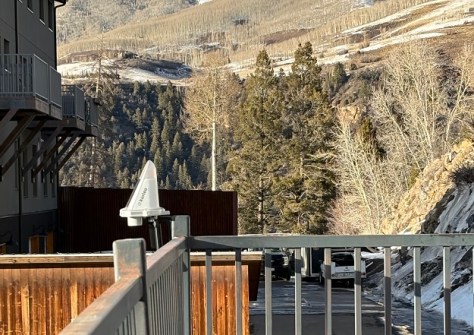
Kurloo is an Australian technology success story with its sights set on worldwide expansion.
PARTNER FEATURE
Many successful businesses and individuals are often described as being overnight successes, but rarely is that really true. Success mostly comes from many years of hard slog, ingenuity and perseverance. And this is certainly true of Australian company Kurloo, whose success is founded upon decades of experience and years of focused innovation.
And it helps to be able be spot a gap in the market. According to Kurloo’s founder, Lee Hellen, “We saw an opportunity around six to seven years ago where there was a converging of technology — low-cost GNSS chipsets, other low-cost components, solar and battery systems, advanced manufacturing, and improved positioning infrastructure.”
“We had limited accessibility to a digital fiduciary geodetic network a decade ago, but today we have positioning infrastructure that we can take advantage of to operate our service globally,” he says. “We used our knowledge to create a service that would effectively allow automation of geodetic measurement to be more widely adopted not only in geospatial, surveying and mapping, but also in mining, transport and infrastructure — monitoring geo-hazards and landslips more simply and more easily than ever before.”
Hellen says he is inspired by Australian companies such as Maptek and Emesent. “We know that Australian businesses can succeed on the world stage,” he says. “Kurloo is just another example of that, but our specialisation is in positioning and the Internet of Things.”
And that’s paying off for the company on an international level. Kurloo devices are operating in seven countries and regions — Australia, the UK, Switzerland, South Korea, Singapore, New Zealand and North America — with South America soon to come.
Challenges
Hellen points to the difficulties of marrying the efforts of the academic research sector and that of private industry.
“I think the difficulty is that the opportunity for forging partnerships between research and industry is quite limited. You know, it’s quite a big step for a lot of businesses to step out of making money to do some research and development. We were very lucky, as we came out of the Innovative Manufacturing CRC.”
But Kurloo is not shying away from the problem. In fact, the company is taking the lead by sponsoring three industry PhD collaborations: one through the CSIRO and Curtin University on work with InSAR, another with Deakin University on the scalability of cloud platforms, and a third one under development with QUT.
“Industry and research collaboration is really important because it helps researchers solve real-world problems,” says Hellen. “A lot of companies don’t have the people free to do research; they’re just too busy. What makes me proud is that we can provide employment opportunities for highly skilled and educated people in the fields of computer science, electronics manufacturing and positioning.”
Success stories
Hellen says he wants more stories like Kurloo’s to be told to encourage Australians to be inventive.
“People just think, ‘Well, why would I invent something when I can just buy an imported product off the shelf?’ And unfortunately, we pay the price for that, because quite often the products that we bring in aren’t well designed for or suited to an Australian environment; in other words, they rely on the user to do their development for them,” he says.
“That was one of the motivations for establishing Kurloo. The equipment we were using needed a lot of additional investment to make it practical for the conditions we worked in. Being able to roll out simply and with a high degree of confidence that it would perform in our local conditions was vital to us using it more frequently in our consulting practice.”
Designing a product based on years of experience under tough Australian conditions has turned out to be a real blessing.
“We’re finding both our hardware and software systems are working very well for the customer, because of the amount of research and development that’s gone into it,” says Hellen, adding that he finds it amazing how quickly Kurloo is being adopted internationally.
For instance, “I had an online meeting with a guy in Colorado this morning. We sent some units to him via the post, and they were up and working at –25° Celsius within a week.”
Hellen says he’s now starting to see the growth in the company that he always knew it was capable of achieving. “Accessing geodetic measurements simply and autonomously to truth all kinds of data in all types of conditions is something that the world is crying out for,” Hellen says. Kurloo currently has 14 staff members, but there are plans to double that over the next 18 months.
The company is also looking at setting up more sales channel partners and personnel around the world. “It’s about aligning ourselves with people who hold similar values,” says Hellen. “We seek out people who have a really strong service component, that are motivated by helping people work smarter and inventing better ways of solving real work problems with good science and technology.”
For more information, reach out to kurloo.io.







